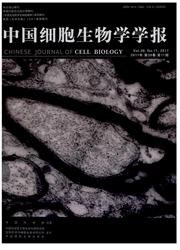

 中文摘要:
中文摘要:
整合素(integrin)是一类重要的跨膜黏附分子,在T细胞定向迁移到淋巴器官、感染或炎症部位以及T细胞与抗原呈递细胞(antigen presenting cell,APC)之间相互作用等过程中起重要作用。T细胞受到抗原或趋化因子等的刺激后,启动细胞内大量的信号传导分子,并形成"inside-out"信号通路,导致整合素构像的改变(conformation change)或促进整合素在细胞表面的聚集(integrinclustering),最终增强整合素的affinity或avidity,促进其与配体结合的能力,提高淋巴细胞间的黏附。近年来的研究已经鉴定出调控整合素活化的多个关键的信号分子及其形成的信号转导复合体。该文主要阐述T细胞受到抗原刺激后,由T细胞受体(T cell receptor,TCR)介导的"inside-out"信号通路中关键的信号分子如ADAP、SKAP-55、RapL、Rap1、Talin和Kindlins等如何与上下游信号分子协同作用,调控整合素LFA-1活化的分子机制。
 英文摘要:
英文摘要:
Integrins are transmembrane adhesion molecules that are critical for the migration of T cells to lymphoid organs and to sites of infection or inflammation. Integrins also play important role for conjugate formation between T-cell and antigen-presenting cell (APC). After T-cell receptor (TCR) is engaged by the MHC-peptide complex or after chemokine stimulation, many signaling proteins participate in "inside-out" signaling that result in integrin conformational changes or clustering at the cell surface. With increased affinity and avidity of integrins for their ligands, T-cells enhance adhesion ability to other lymphocytes. In the past several decades, many key signaling molecules and signaling complexes have been identified to regulate integrin activation. In this review, we summarize the role of several important signaling components, including ADAP, SKAP-55, RapL, Rapl, Talin and Kindlins in TCR induced "inside-out" signaling for integrin activation.
 同期刊论文项目
同期刊论文项目
 同项目期刊论文
同项目期刊论文
 期刊信息
期刊信息
